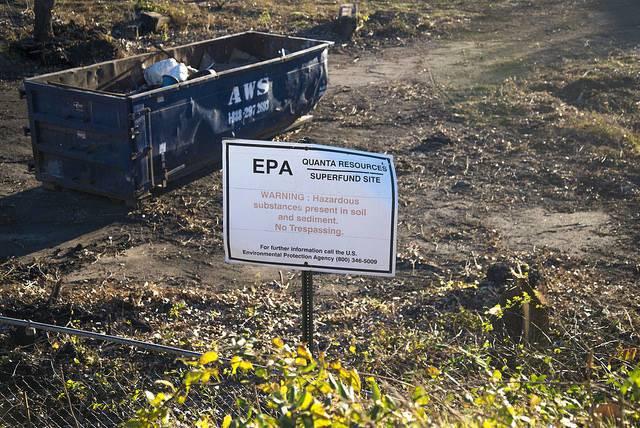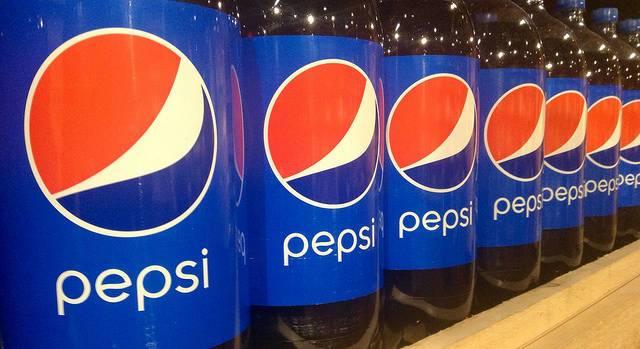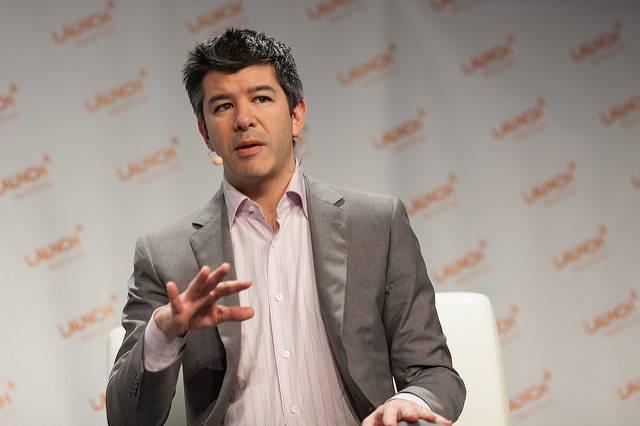The American Health Care Act Is Fake Health Care


On Monday, the Congressional Budget Office released its analysis of the Republican-backed American Health Care Act (AHCA). The nonpartisan agency found that the AHCA would reduce the federal deficit by $337 billion between 2017 and 2026. That shrinking deficit can be attributed to:
- Reducing Medicaid funding for 70 million Americans
- Reducing government subsidies of lower-income health insurance premiums
- Eliminating a hospital insurance payroll tax rate increase for high-income taxpayers
- Eliminating a net investment income surtax
- Eliminating annual fees on health insurers
The CBO also speculated how these cuts will impact the insured -- estimating that 14 million more people will be uninsured by 2018 compared to the current system. By 2026, that number could jump to 24 million.
The CBO analysis reveals that the American Health Care Act is little more than fake health care. It saves money for businesses and high-income Americans. But it does so by reducing health care.
The AHCA is a budget bill, not a health care bill
The CBO’s findings align with the purpose of the American Health Care Act. The AHCA is a budget bill. It is designed to reduce federal expenditures on health care.
As a budget bill, the AHCA can be passed by a simple majority in the Republican-controlled Congress. If it were a healthcare public policy bill -- seeking to create competitive bidding among drug companies or reform medical insurance to be more like life, car and home insurance -- then it would require a 60 percent majority vote for passage.
By qualifying as a budget bill, the AHCA can be passed by majority vote even if it dramatically reduces medical care to 70 million lower-income Americans served by Medicaid. It can pass on a simple majority even if it creates 24 million uninsured Americans.
AHCA economic impacts on you
Will the AHCA put money in your pocket? Not unless you among the 1 percent.
The 1 percent, those making over $200,000 annually, will gain approximately $190,000 from the AHCA. If you are in the 99 percent of earners, the AHCA will either be of zero benefit to you or it will cost you money, according to the CBO analysis.
If you and your child on are on Medicaid, for example, the AHCA will probably cost you money. It may even cost you more while offering lower-quality health care.
And many analysts remain uncertain about how badly the proposed plan could hurt the 70 million Americans on Medicaid. The reason is simple: The AHCA places the funding and benefit size of Medicaid on individual states. Doing so makes where you live, rather than your health, the determinate of the care you receive.
AHAC impacts on economic growth
Another key economic question is whether the AHAC is a zero-sum game or if it will actually be a spark for economic growth. Two major reasons indicate the former.
First, the AHAC accounts for dramatic growth in the uninsured. We had millions of uninsured before Obamacare. They received medical care through free services provided by hospital emergency centers. The cost of the free service was recovered by increasing premiums on the insured. What are the odds that the AHAC will not recreate this past situation?
Additionally, the AHCA will dramatically shrink the medical insurance pool. Obamacare created large financial incentives for having medical insurance by imposing a tax on those who did not sign up for insurance. The goal was to create a larger pool of healthy individuals that would drive down insurance premiums for all. (This same principal applies to how we buy car insurance.) The AHAC has such a weaker financial incentive for the healthy to buy health insurance that the CBO estimates the purposefully uninsured will make up the majority of those uninsured in 2018. They will save money, for now, at the expense of higher insurance premiums for all.
But the reason we have a proposed AHCA is because Obamacare failed to make medical insurance affordable. What Obamacare did create was increased government funding of health care. Despite Obamacare, insurance premiums skyrocketed, insurance companies continued to dispute actual costs incurred, and deductibles grew to levels where our medical coverage only applies to catastrophic events.
During the last election, our politicians said they would repeal Obamacare and replace it with affordable health care.
The AHCA does not fulfill that promise. It is a budget bill that reduces the deficit without reducing healthcare costs. It will put money in the pockets of the 1 percent. And it will not do so for the rest of us. We'll continue to be saddled with higher premiums, higher deductibles and the frustrations of insurance claim denials.
The AHCA offers no innovations to make health care affordable. The AHCA has no innovations that would promote individual health. And that is devastating to economic growth.
For the first time in American history, average annual medical costs are $10,000 per person. Our country annually spends over $3.2 trillion on health care. That is 20 percent of our annual gross domestic product. While we spend more, our health care ranks last among developed countries.
Solving for these issues, not shifting costs among income classes to achieve a budget deficit, is the path to providing affordable health care and economic growth. Will we take it?
Image credit: Pexels
Could Trump’s Border Wall Start a Land Grab in Texas?


U.S. President Donald Trump is hell-bent on building his border wall. And, politically, he really does not have a choice.
This promise, first made when Trump announced his campaign almost two years ago, was one of the main reasons why he found himself catapulted into the White House. But just as the George W. Bush administration found when it started building a border fence a decade ago, the process will be complicated.
Federal officials will have to deal with county and local governments, along with hundreds of American landowners who occupy the border -- which spans 1,945 miles between Texas and Mexico alone. As a Bloomberg report highlighted last month, Bush’s efforts did not win him too many friends in his home state of Texas.
But Trump’s White House is far more focused, as shown in a January executive order that sought to neutralize the “transnational criminal organizations” and those who “seek to harm Americans through acts of terror.” But standing in Trump’s way are landowners who are determined to hold onto their property or, at the very least maintain, access to it. As an NPR investigation revealed last month, many of the land acquisition court cases filed during the Bush administration remain unresolved.
Now, the evidence suggests that the Trump administration will resort to land-grab tactics such as eminent domain if necessary.
As the Austin-based investigative news publication the Texas Observer reported this week, residents and land owners are continuing to receive notices from the Department of Homeland Security (DHS) stating that the agency wants to condemn land in order to move forward on the border wall.
One family, to which the federal government offered $2,900 a decade ago for 1.2 acres near the Rio Grande, received another notice in January. As the Observer's Melissa del Bosque reported, the Salinas do not want to give up the land that has been with them for generations, but they also do not have the resources to put up a years-long fight in the court system.
But multiply the Salinas family of the tiny town of Los Ebanos by hundreds, if not thousands of cases, and the feds will have a long struggle ahead to get the land they want. And according to law professor Gerald S. Dickinson, securing the land will be even tougher than fighting if the administration decides to file eminent domain cases.
Not that eminent domain is new to Donald Trump, who has capitalized on the costly and litigious procedure for years - including the famous case against an Atlantic City widow who fought Trump in court and eventually won. As the conservative National Review wrote in 2011, when Trump briefly considered a challenge to Barack Obama’s reelection, the then-hotel and casino magnate said he “has a track record of using the government as a hired thug to take other people’s property.” Last year, Randal John Meyer of the libertarian Cato Institute was equally scathing: “He’d need to steal private property Americans” in order to build this wall.
Of course, the federal government cannot simply take the land. As enshrined in the Fifth Amendment of the Constitution, the government would have to provide “just compensation” to landowners. But a definition of fair compensation will not be an easy for landowners and government agencies to settle, which could help drive up the wall’s costs – if not for land purchases, then litigation. Nevertheless, Bloomberg reports that DHS has opened up bids for the wall’s design and construction, and despite Trump’s past promises that Mexico will “pay for it,” the administration is asking for as much as $6.6 billion in the next federal budget to serve as a down payment on the project.
Image credit: Ken Lund/Flickr
Peet's Wants Customers to Know That Coffee Can Change Lives


Alfred Peet founded Peet's Coffee and Tea back in 1966. The bespectacled Dutch immigrant worked in the coffee trade before moving to San Francisco after World War II. This was long before the haute coffee trend hit the mainstream and your friends started gushing about French presses and cold brews. In the '60s, Americans were drinking low-grade mud. Needless to say, Peet was appalled.
When he opened his first coffee shop in Berkeley, California, his brews were unlike anything patrons had ever tasted. The idea quickly took off, and Peet's became a cult favorite among what was one of America's hippest consumer groups.
Peet's now operates storefronts in eight states plus Washington, D.C. And its coffee is available in cafes across the country as well as mainstream retailers like Target, Walmart and Giant. It was acquired by JAB Holding Co., the same firm now behind Keurig Green Mountain, for $974 million in 2012. But like many in the social good space, Peet's was given autonomy to keep its operations consistent under the new parent company's umbrella.
With roots in a place and time like 1960s San Francisco, it's likely no surprise that social consciousness was a part of Peet's story from the start. Some of the same artisanal coffee growers who worked with Alfred Peet over 40 years ago are still part of the company to this day. One of those growing collectives is the Falla family in Guatemala.
"The longevity of the relationship stems from the superior quality of their beans, and also because of the care they show for the environment, their workers and the surrounding community," Doug Welsh, VP of coffee and 'Roastmaster' for Peet’s, said of the Fallas.
"As our relationship has evolved over the years, we wanted to do more than buy coffee from the Fallas," Welsh told TriplePundit. "We started donating to the school the farm sponsors as well as to the clinic the family hosts, which provides basic medical care at no cost to their workers and family members."
The company's four decades of work with the Falla family helped inspire its social mission. Its latest effort, People and Planet, features curated coffees that highlight the brand’s heritage of working collaboratively with farming communities. The line includes nine coffees, such as Guatemala San Sebastián, a sharp and sweet blend that comes from the Fallas farm in Guatemala's Antigua Valley.
Through the effort, Peet's is looking to engage consumers and connect them with the people and places behind their cup of coffee. The effort focuses on promoting three practices already near and dear to the company's heart:
- Direct Trade: Peet's prides itself on personal relationships with farmers. It negotiates prices directly and collaborates with these suppliers on projects that support the people, communities, and natural environment surrounding their farms.
- Farmer Assistance: The company also trains coffee farmers in agronomy and business skills -- with the aim of helping them improve product quality, obtain higher crop yields and secure premium prices.
- Certification: Peet’s focuses on sourcing coffees that carry USDA Organic, Fair Trade and/or Rainforest Alliance certifications.
That all sounds great. But with the number of so-called 'sustainable' coffee labels on the market, what really sets Peet's apart? If anyone would know, it's Doug Welsh.
Welsh once worked at Peet's first store on Vine Street in Berkeley. Nearly 25 years later, he's now the third person to hold the esteemed title of Roastmaster. We spoke with him further to find out what really makes a socially-conscious cup of Joe.
Direct Trade builds on longstanding relationships
Most of Peet's People and Planet coffees bear an environmental certification, if not several. But beyond certification, Peet's introduced its Direct Trade business model to build upon its longstanding relationships with farmers.
Direct Trade was also partially inspired by the Falla family, Welsh said. "[Working] with coffee growers like the Fallas is an integral part of how we source coffee," Welsh told us of the Direct Trade model. "It’s rooted in our belief that quality is correlated to the well-being of those who produce our coffee and to the natural environment."
Through the program, Peet's invests in a project in each coffee-growing community where it does business. But the real task is directly engaging with these communities to find out what they need, Welsh said.
"Our Direct Trade producer relationships are based on constant dialogue and continuous improvement over time," he told us. "Coffee farming is hard work. And we believe we are being the most supportive when we listen to our farmers, learn what works and what does not, and work together to make improvements."
Farmer Assistance programs drive community impact
Alfred Peet opened that first shop with one goal in mind: Bring better coffee to the American market. The close-knit relationships that followed were initially based on product quality, and the company's motto is still "coffee first." But the business structure that formed around these relationships -- now called corporate social responsibility (CSR) but once known quaintly as "the right thing to do" -- helped Peet's survive where others failed.
"We want to help farmers move from producing average-quality coffee to producing high-quality coffee, and to grow more of it," Welsh said. "There is growing appetite, literally, for high-quality coffee. And we want to help farmers take advantage of this opportunity."
Through its Farmer Assistance program, the company supports smallholders with lessons in farming practices, as well as business development. As they become more empowered entrepreneurs and their quality and yield increases, coffee farmers can earn far more for their crops and give their entire families a better quality of life.
Fostering a genuine connection with suppliers
Take Peet's longstanding partnership with international nonprofit TechnoServe -- which informed another People and Planet coffee, the Uzuri African Blend.
"TechnoServe was working with coffee cooperatives across East Africa to help them improve crop quality and yield as part of a multi-year program funded by the Gates Foundation," Welsh recalled.
The java gurus at Peet’s were initially tasked with giving farmers feedback on their product. "As the coffee produced by these cooperatives increased in quality, we were inspired to create our first blend of African-only coffees and source directly from these hardworking farmers," Welsh told us. "This created a mutually beneficial and reinforcing relationship that we continue today."
The modernization of coffee farms in Rwanda, Kenya, Tanzania and Ethiopia meant a tasty new blend for Peet's and upward mobility for thousands: The company pays a premium price for the high-quality coffee, allowing farmers to improve their financial conditions and that of their entire communities. "We’ve seen many farmers — through their cooperatives — decide to build schools and install power lines, among other community improvements," Welsh said.
The company's supply chain in Nicaragua tells a similar story. There, Peet's sources coffee from a group of 200 women farmers, which its team calls Las Hermanas. "Since we started purchasing their coffee in 2003, the women of Las Hermanas have transformed their own lives, the lives of their families, and the quality of life in their communities," Welsh told us.
"Now that they are vital economic contributors in their families, the women have developed greater self-confidence, and they have been able to access financing to purchase additional land on which to grow more coffee."
The cooperative now funds medical care and youth programs in their community in the highlands of Jinotega, Nicaragua, and their coffee is included in Peet's Los Cafeteros Blend.
The bottom line
Are we sensing a pattern here? Each of these success stories, like so many in the sustainable business community, stems from a genuine relationship with the people that make up Peet's supply chain.
And communicating this connection to customers -- an effort it hopes to increase with the People and Planet line -- allowed the company to foster a genuinely authentic brand that continues to compete in what is now a woefully crowded marketplace.
Additional People and Planet coffees will be announced throughout the year, as well as events where Peet's will invite its customers to engage around the initiative.
Image credits: 1) Pexels 2) Courtesy of Peet's Coffee
17 House Republicans Co-Sponsor Climate Action Resolution


U.S. President Donald Trump may be on the record calling climate change a “hoax,” but the GOP is not necessarily united on this issue. Although climate science programs have been a top target of the administration, this week 17 Republicans in the U.S. House of Representatives expressed their commitment to “conservative environmental stewardship.”
Their resolution was submitted on Wednesday by two-term U.S. Rep. Elise Stefanik, who represents upstate New York. In a nod to how important the Adirondack Mountains are to local economies within New York’s 21st District, Stefanik said she and her 16 GOP cohorts “understand that protecting our environment plays an important role in promoting economic growth and opportunity.”
The lawmakers acknowledged the science supporting climate change as well as the risks it imposes on agriculture, wildlife and public health. And they also insisted that both market-based and regulatory measures are needed to reduce any future impact from manmade climate change.
Also supporting the agreement is Carlos Curbelo of Florida, another representative in his second term whose district includes parts of Miami-Dade and the Florida Keys – an area at long-term risk of sea-level rise.
In a letter he and three other GOP lawmakers sent to Secretary of State Rex Tillerson earlier this week, Curbelo urged the Trump administration to keep America's commitments to the 2015 global climate agreement reached at the COP21 talks in Paris.
“Stepping away from the agreement would mean stepping away from the immense opportunities that these international investments afford American businesses and research institutions,” Curbelo wrote.
The resolution Stefanik proposed is non-binding. And it's identical to another resolution proposed in 2015 during the previous Congress. That proposal also had 17 co-sponsors, and went nowhere after it was introduced on the House floor. Many of this current resolution’s co-sponsors have dubious environmental records, including Rep. Mia Love of Utah’s 4th district. Although Love publicly rebuked Trump before announcing she would support him last October, the Utah lawmaker also took issue with former President Barack Obama -- specifically his designation of an area of her state, saying it amounted to Obama “behaving more like a dictator.”
Environmental groups offered tempered support for the Republican resolution. In an emailed statement to TriplePundit, Sam Adams of the World Resources Institute said: “It is encouraging that Republican members of Congress put forward this resolution to take measures to combat climate change that also grow the country’s economy.”
Ken Kimmel, president of the Union of Concerned Scientists, also expressed cautious optimism toward the resolution. “It shows that these Republican lawmakers are not in a state of denial about this key issue,” Kimmel said in a public statement. “And I hope this sizable group of responsible leaders will have an impact on votes in Congress.”
The resolution comes a week after Environmental Protection Agency Administrator Scott Pruitt said he does not believe carbon emissions are a leading cause of climate change. And among the many budget cuts and policy changes being proposed by the White House include the dismantling of the agency’s Clean Power Plan.
Nevertheless, if these GOP House members are serious about their resolution, they have plenty of economic cases to back up their agenda. Renewables such as solar and wind power continue to scale and decrease in cost as more private companies such as UPS invest in these technologies. The U.S. solar industry also claims 1 out of 50 new American jobs created last year in its sector, as clean energy dominated new power generation across the country during 2016.
Image credit: U.S. Navy
EPA’s Environmental Justice Head Resigns as Program Faces Deep Cuts


Last week Mustafa Ali, the Environmental Protection Agency’s chief environmental justice officer, announced his resignation.
In a letter to EPA Administrator Scott Pruitt, Ali shared his concerns about the agency’s future work with poorer communities, writing: “I wonder if our new leadership has had the opportunity to converse with those who need our help the most.”
Ali helped establish the environmental justice office in 1992 during the George H.W. Bush administration. Over those 24 years, Ali said he worked with over 500 communities, overwhelmingly areas where the vast majority included the poor, people of color or Native Americans. Ali pointed out that these communities often struggled with poor air quality, aging water and sewage infrastructure, and hazardous waste sites, including those that were part of the EPA’s Superfund program.
During both Republican and Democratic administrations, Ali said considerable progress was made on remediating and protecting these vulnerable communities.
But an internal memo leaked to publications earlier this month, including the Washington Post, suggests a plan is underway to reduce the EPA’s annual budget by a quarter or more, and its staff by a fifth.
And the administration’s proposed budget could eliminate the EPA's environmental justice office altogether, reported by The Oregonian and others. Another report on CNN suggested that budget cuts to the EPA could even be deeper.
Between those changes, and the fact that Ali’s title as senior advisor to the EPA administrator was stripped when Pruitt’s predecessor, Gina McCarthy, left in January, the former environmental justice head felt he needed to “stand up,” he told the blog ThinkProgress.
The shuttering of the EPA’s environmental justice office, along with other proposed cuts to the Housing and Urban Development as well as the debate over the Trumpcare health legislation, starkly contrast with Donald Trump’s promises to “rebuild” America’s urban centers. Environmental justice activists have long argued that the revitalization of any poor community must include commitments to improve air quality and ensure access to safe water.
And in an interview with NPR earlier this week, Ali made it clear that people of color were hardly alone in confronting substandard air and water quality. "It's also low-income white communities,” Ali told “Morning Edition” host Steve Inskeep. “If you look through Appalachia -- if you look throughout the Rust Belt and so many other places across our country -- there are many communities who are also facing environmental injustices.”
If the EPA’s environmental justice budget indeed craters to only $1.5 million annually, and its mandate is buried within the agency’s policy office, watch for the small grants that spurred environmental cleanup in poor neighborhoods across the country to disappear.
As Ali argued in his resignation letter, those funds helped mobilize citizens to work together to revitalize their communities. The EPA’s brownfield cleanup programs, for example, generated an additional $16 in additional funds for each dollar the agency dispersed. And a $20,000 EPA grant to clean up a contaminated site in Spartanburg, South Carolina, eventually blossomed into a $270 million investment in economic revitalization, job training, environmental cleanup, infrastructure and the establishment of a local health services center.
While the environmental justice movement is largely localized, Ali insists that a federal presence -- as in the EPA -- is valuable for its offering of technical assistance and resources. “When the federal family or federal agency enters into a space, it will attract others to that conversation, allowing communities to get traction to be able to be a full partner in a process,” he told ThinkProgress reporter Natasha Geiling.
Image credit: Anthony Albright/Flickr
Pepsi Cuts Jobs Over Philly Soda Tax


For many analysts the news just keeps getting worse for Philadelphia, thanks to its new soda tax.
Last June, lawmakers had grand plans for the city's tax on sweetened beverages. They said the 1.5-cent-per-ounce tax would help fund children’s education programs, including a pre-K expansion, park and recreation center updates, and a backup fund for city projects. They made some concessions along the way: After cutting the proposed tax from 3 cents to 1.5 cents per ounce, they expanded the list of eligible products to include artificially-sweetened drinks beyond sodas.
A cent and a half doesn’t sound like much, right?
Except it is. It’s a huge increase in cost for Philly soda fans. As consumers discovered when the tax kicked in on Jan. 1, it works out to about a buck more for a 2-liter bottle of their favorite fizz. A 12-pack of soda cans can see an increase of more than $2.
But the greatest mistake city legislators may have made was a failure to consider their support base: the consumers who would be expected to pay the tax, the stores that rely on soda sales and, of course, the manufactures that produce the products -- many of which do so right there in Philly. Like – ahem – Coca Cola and Pepsi.
And lawmakers also didn’t take into consideration that a city’s ability to leverage taxes only goes as far as its geographic boundaries. So when consumers discovered the sticker price of their weekly soft drink purchase, some analysts say they headed for the next city to do their shopping.
Supermarkets noticed the change pretty quickly. Some retailers said soda sales dropped 30 to 50 percent within the first few weeks, sending a jolt through the commercial sector. If you figure that the U.S. owns more than 20 percent of the worldwide consumption of carbonated soft drinks alone, and Philly is a major center for the two biggest drink manufacturers, it isn’t hard to understand consumer response.
As Tim Worstall, a columnist for Forbes put it: “Taxes change the price system. Changes in the price system change peoples' behavior.” And tax structures that change behavior can have unintended impacts on industry.
On March 1, Pepsi announced that it would lay off as much as 20 percent of its Philadelphia staff as a result of the local slump in sales. The job cuts reverberated across the board, including frontline and supervisory positions.
Philly may be the first “major” city to successfully pass a soda tax, but it isn’t the first global location to get away with it. The city of Berkeley, California, implemented its own tax in 2014, and for a different reason: It wanted to encourage better eating habits.
Mexican lawmakers tried something similar. Each established its own criteria for a drink tax, noting that such taxes were not intended to raise money but to persuade citizens to consume less sugar. Both faced unique challenges in implementing the tax, and both saw positive results.
At the end of one year, both Berkeley and Mexico reported a drop in sugared drink sales. According to a study conducted by researchers at the University of California, Berkeley, there was a 21 percent drop in sales within the city limits, and a 4 percent increase in sales in adjacent cities like Oakland, where the tax wasn’t in effect. But there was also evidence that people were drinking more water instead of soda at home.
Mexico found a similar drop in soda sales, particularly in low-income households, where obesity was a statistical problem. As in Philadelphia, communities struggled with the offset to industries that rely on soda drink sales. But according to researchers, the challenges have been worth the gains.
There are a few interesting takeaways from Philly’s soda sales drop (which, of course, will affect the city’s ability to raise the $91 million it wants for its education and recreation programs):
- People can be fickle. They don’t like to be told they should do something for their health, but they may be more willing to go along with a tax that helps them do that rather than revenue for a program they don’t use. Just look at how hard it is to pass school levies in neighborhoods that don’t have children.
- Consumers will travel. Take away their sugar (or their cigarettes, or their booze, as history has proven) and people will do strange things, like shop in the next town over or the next state, for that matter.
- Businesses don’t like losing money to fund programs they won’t use, either, like expanded pre-schools and city parks. But getting public-private partnerships together that they can in turn, promote publicly, often does.
Perhaps there's a takeaway for soda drink manufacturers as well. Philadelphia is only the more recent in a long list of cities that have tried, with some success, to impose a soda tax. So have countries like Ireland, the U.K. and Hungary (that taxes junk food in general). So the opportunity may be here for soda companies to initiate their own "public-private partnership" in terms of seeking out product lines that will enhance (and not fight) the message that cities like Berkeley and countries like Mexico are trying to send to young consumers.
And who knows, maybe along the way, there will be room for dialogue about new ways that consumers and businesses can build those much-needed public parks and schools in Philly.
Flickr/Mike Mozart
Yesterday's Tax Document Leak Covered Up a Sinister Executive Order


Yesterday, when media outlets were salivating over the potential contents of Trump's 2005 tax return, the White House was focused on its most alarming executive order yet.
The Presidential Executive Order on a Comprehensive Plan for Reorganizing the Executive Branch asks the head of every agency to submit an efficiency plan that justifies its very existence (or doesn't). Suddenly, crazy steps like appointing a climate change denier to head the EPA and a public school critic to head the Department of Education make a dangerous amount of sense. Unfortunately for those of us who value clean air, clean water, and social services like public education, food safety, and a minimum wage, the offices that protect these community assets are now themselves very vulnerable.
The Executive Order touches every agency that provides social services at the federal level: the EPA, USDA, Department of Energy, Department of Education, Department of Health and Human Services, HUD, Department of the Interior, DOJ, Department of Labor, Secretary of State's office, Department of Transportation, Veterans Affairs, Department of Defense, and Department of Homeland Security. It directs the heads of these offices to:
propose a plan to reorganize governmental functions and eliminate unnecessary agencies.... the head of each agency shall submit to the Director a proposed plan to reorganize the agency.
The executive order goes further. Six months after these plans are submitted, the Director of the Office of Management and Budget, Mick Mulvaney, is to submit recommendations to the President "to reorganize the executive branch in order to improve the efficiency, effectiveness, and accountability of agencies. The proposed plan shall include, as appropriate, recommendations to eliminate unnecessary agencies, components of agencies, and agency programs, and to merge functions."
Yikes! Government functions like the Department of Transportation's regulation of fleet fuel efficiency and FDA's pharmaceutical approval process are now at risk of being eliminated entirely. While this is a wet dream for hardcore libertarians who favor a small government, those who value the support structure a shared government provides should understand the dystopian implications of a world without regulation.
Indeed, the executive order points to the free market as a possible replacement for these necessary government functions. In drafting these recommendations, directors should consider "whether some or all of the functions of an agency, a component, or a program are appropriate for the Federal Government or would be better left to State or local governments or to the private sector through free enterprise."
While there is a role for the corporate sector in innovating solutions to the world's largest problems, the corporate sector requires an even playing field in which to innovate. For example, oil companies will only work against climate change if it saves them money in the short or long term. Government regulations in the form or a carbon tax or cap and trade are the fastest way to get them there. Given the urgency of climate change, strong regulations, such as those agreed to at COP 21 in Paris, are required to solve this problem which transcends national borders.
Surely there are many Americans who support small government, just look at the House Freedom Caucus. If this effort to reduce the size of government in a large sweep is good news, why is everyone tweeting about Donald Trump's 2005 tax returns?
BREAKING: We've got Trump tax returns. Tonight, 9pm ET. MSNBC.
(Seriously).— Rachel Maddow MSNBC (@maddow) March 14, 2017
Spoiler alert: The big reveal was a two page copy of Trump's 2005 1040 form, showing he'd paid almost $38 million in taxes that year. Hmmmm.
All arrows point to a Trump camp leak
Almost as soon as Rachel Maddow announced that she had a leaked copy of Trump's tax return, rumors began flying that the leak came from the Trump camp itself. The evidence is compelling:
- The leaked document was stamped "Client Copy" While the document may not have come from Donald Trump himself, it came from someone with access to his personal records, rather than someone at the IRS.
- The contents weren't so bad The two-page document revealed that Donald Trump paid $38 million dollars in taxes on $150 million in earnings, an effective tax rate of 25%. That's higher than President Obama paid in 2015, Bernie Sanders paid in 2014 and Mitt Romney paid in 2012. That looks good for Trump. If this is representative of the last decade of returns, why hide them in the first place? Why leak a single example now?
- The speedy White House response Hours before Maddow's show even aired, the White House released a statement to multiple media outlets revealing the contents of the leak, scooping Maddow and claiming that she broke the law by releasing the documents. They authenticated the contents of the leak while criticizing the leakers. This is a typical Trump camp move to effectively shape the story.
- The leaker himself alluded to a Trump source. The tax documents were mailed to Pulitzer Prize winning reporter David Cay Johnston who wrote a book about Trump in 2016. Johnston suggested on Maddow's show that the leak may have come from Trump himself: “It’s entirely possible that Donald sent this to me,” Johnston told Maddow. “It’s a possibility, and it could have been leaked by someone in his direction.”
Trump has successfully used the media's frothiness to direct public conversation away from dark corners he'd prefer to hide. Yesterday's executive order is a classic example of why we need to pay attention to whatever Trump chooses NOT to tweet about.
The E.O. provides the tools for dismantling all of the dearest services our government provides. Libertarians and small government advocates are dancing in the street, while those of us who understand the value of protecting the public goods should be shaking in our boots.
This article was updated after it was published to indicate that the EO was released on Monday March 13th, not Tuesday the 14th.
Reports Praise Corporate Progress on Deforestation, But Much Work Lies Ahead


The impact of the global palm oil industry on human rights and deforestation has inspired many NGOs to push multinational companies to become far more transparent about their operations and supply chains.
The evidence suggests that the work of NGOs including Greenpeace and the Rainforest Action Network are showing results. According to a report another environmental group, Forest Trends, released this morning, more companies are not only developing deforestation commitments, but are also sharing and updating their progress publicly.
Researchers who work on Forest Trends’ Supply Change initiative evaluated 447 companies that made 760 various commitments to eliminating deforestation. These companies are concentrated in the beef, soy, palm oil, and timber and paper industries, the four commodities NGOs including the Union of Concerned Scientists describe as driving global deforestation.
At a high level, the good news is that the amount of anti-deforestation commitments as of this year increased over the number Forest Trends tracked in 2016. A commitment, however, does not necessarily translate into action: This same survey suggests that 1 in 5 such commitments has become dormant, and at least a third of the companies surveyed have allowed at least one commitment to languish.
Forest Trends says it sees the most progress on transparency within the palm oil and timber sectors. Certification programs such as the Roundtable on Sustainable Palm Oil (RSPO) and the Forest Stewardship Council (FSC) certainly help. The report also states that “collective action spurs individual action,” as when a company makes a pledge to support commitments including the New York Declaration on Forests or the High Carbon Stock Approach Group.
But researchers also found that companies with ties to global cattle and soy supply chains are lagging behind on deforestation commitments.
The links between soy and cattle are a concern for Forest Trends, as many NGOs insist the global beef industry alone is responsible for twice as much deforestation as palm oil, timber and soy combined.
Mounting evidence suggests that many global companies are behind a resurgence in deforestation across South America, especially in Brazil and Bolivia. Hence organizations such as the Global Roundtable for Sustainable Beef and the Leather Working Group have a lot of work ahead – but will also find plenty of opportunities to guide and assist these industries to be more accountable and sustainable.
“Media and public scrutiny around palm oil and its links to tropical forest destruction has helped drive companies to act in order to satisfy growing demands from shareholders and consumers for sustainable practices and products,” Stephen Donofrio, senior advisor for Forest Trends’ Supply Change initiative, told TriplePundit in an emailed statement.
“What our research shows us about major consumer-facing brands from the U.S. and Europe is a great start, but we won’t see transformational change until all companies in the palm value chain – particularly those in Asia – get on board. Governments have a critical supporting role to play by adopting and enforcing better policies.”
This report should be a wake-up call for retailers to hold their entire supply chains more responsible to halt deforestation as their products make their way from farms to these companies’ store shelves.
Of all the companies analyzed, at least 70 percent of processors, producers and traders have issued deforestation commitments, as well as two-thirds of manufacturers. The retail sector is far behind, however, as Forest Trends estimates that just over half of these companies have developed clear and transparent deforestation policies.
The researchers were careful not to single out individual companies, but they did tip their hats to Walmart for making progress on its zero-deforestation commitment. But similar studies reveal that many retail companies are silent on the issue – a disappointment considering that their buying power can help push their suppliers to clean up their operations.
Overall, Forest Trends’ researchers are hopeful, considering that a year ago, only a little over a third of corporate deforestation policies could be verified. That ratio has surged to over 50 percent this year. And as more companies join industry organizations and follow sustainability guidelines, that pressure will help persuade other companies to follow their lead – especially when it comes to privately-held firms, which tend to be more opaque as they do not have to follow the same disclosure policies as their publicly-held peers.
Image credit: CIFOR/Flickr
Uber’s Leadership Crisis Demonstrates How Values Impact Brand


By Tyler Wagner
It appears that Uber’s chickens have come home to roost.
A steady drip of negative stories over the past several weeks has snowballed into a full communications crisis — one that peaked recently, as CEO Travis Kalanick fought through tears to admit that the time has come to “grow up” and that he needs “leadership help.”
Widely hailed as the world’s most valuable startup, the company has been in the headlines lately for all the wrong reasons.
In case you haven’t been following, the most recent installment of “Uber’s Toxic Culture Exposed” featured a dashboard video of Kalanick having a less-than-cordial exchange with an Uber driver. This on the heels of allegations that, among other things, the company was permissive of sexual harassment, stole a competitor’s designs for an autonomous vehicle, and has actively employed technology to circumvent law enforcement.
Reading even one of the aforementioned stories might lead one to reasonably suspect, as I did, that Uber’s “win at all costs” culture — the same culture that led to the company’s meteoric rise — might have its downside.
And then this nugget from a Feb. 22 article in the New York Times:
When new employees join Uber, they are asked to subscribe to 14 core company values, including making bold bets, being “obsessed” with the customer, and “always be hustlin'.” The ride-hailing service particularly emphasizes “meritocracy,” the idea that the best and brightest will rise to the top based on their efforts, even if it means stepping on toes to get there, the Times reported.Those values have helped propel Uber to one of Silicon Valley’s biggest success stories. The company is valued at close to $70 billion by private investors and now operates in more than 70 countries.
Yet the focus on pushing for the best result has also fueled what current and former Uber employees describe as a Hobbesian environment at the company, in which workers are sometimes pitted against one another and where a blind eye is turned to infractions from top performers.
If that sounds like the kind of place you want to spend over eight hours a day, five days a week, then knock yourself out.
Jokes aside, the whole drama is a fascinating case study of toxic values in action, and the connection between culture and brand.
Disruptive technology (a phrase that I cringe while typing) is by definition, disruptive. If you’re rendering your competitor’s business models obsolete — a la Uber — you’re going to step on some toes. I get it.
But there’s a difference between a set of values that promotes a healthy competitive spirit and one that encourages employees to view co-workers and the law as mere obstacles to overcome on the climb to the top.
If Uber’s recent challenges tell us anything, it’s that values matter. And that success built on toxic culture is unsustainable. People just don’t want to engage with brands that don’t share their values. For further reading on this topic, google “VW” or “Wells Fargo” and check out the “news” results. Seriously do it, it’s amazing how long it takes to recover from the damage of a toxic culture.
On the flip side, there are plenty of companies — wildly successful ones — that have flourishing cultures built on a foundation of healthy values.
Southwest Airlines’ values include “don’t take yourself too seriously.” Zappos emphasizes “humility, honesty and team spirit.” REI’s values include a commitment to “a code of rock-solid ethics, honesty and decency.” Together, these read like the antitheses of Uber’s values.
And not behaving like jerks doesn’t make Southwest, Zappos or REI any less competitive or successful. On the contrary: people are eager to engage with them, in part because they share their values.
For Southwest, Zappos and REI, values are more than just words on a page of the employee handbook or a corporate website. They underpin their entire brands, and — alongside other foundational pieces of purpose-driven messaging like mission, vision, and strategy — play a key role in their internal and external communications.
They’ve found common ground with customers, employees, and communities because they’ve effectively communicated that their values are aligned.
So how do we create cultures and build brands that are more like Southwest Airlines and less like any one of the more negative examples referenced above?
We have to ask ourselves a few key questions: What are our values? Do our stakeholders share them? How do they support our mission and vision? Are they a part of a larger, purpose-driven strategy? How effectively are we communicating those values to our customers, employees, and the community at-large?
The list of questions is by no means exhaustive. But, it’s a good place to start.
And they’re important questions to ask. Because the reality is that values shape brands from the inside out — for better or (in Uber’s case) for worse.
Image credit: Flickr/JD Lasica
Tyler Wagner is Director of Client Strategy for thinkPARALLAX, a sustainability communications consultancy with a passion for building brands with purpose. For more information, visit www.thinkparallax.com
Why Capitalism Needs Conscious Leadership


The business world has a bad rap, and not without reason. Deforestation, oil spills, unlivable minimum wages, mass layoffs, the glass ceiling — the proverbial list goes on. Even as some companies purport to be environmental stewards, their treatment of employees and corporate constituents can be irresponsible, inconsiderate and downright shameless. It seems appropriate, then, that people’s trust in global institutions is at an all-time low, and corporate America is viewed as the vanguard of the distrusted establishment.
What can we expect, though, when the bottom line continues to reign supreme? When we consider externalities, human costs and the global frustration with business as usual, an alternative approach to business seems imperative to avoid the total collapse of our natural and human systems.
For the past 30 years, a small yet growing faction of leaders have pioneered frameworks that are an antidote to single-bottom-line thinking — notably the Natural Step, shared value and the triple bottom line. While those and other frameworks have focused on reinventing capitalism by shifting business strategy, accounting principles and operational standards, a new movement called conscious capitalism offers a holistic approach that puts people and moral conscience at the center of business practices.
I recently had the opportunity to learn more about conscious capitalism’s four tenets at the daylong convening HigherPurpose17 hosted by the Conscious Capitalism Bay Area Chapter. More than hearing from inspiring business leaders who provide proof that business can be a force for good, I learned that conscious capitalism doesn’t have to be an oxymoron.
Reaching a higher purpose
Of the framework’s four tenets — higher purpose, conscious leadership, conscious culture and stakeholder orientation — connecting to a higher purpose is perhaps the most pivotal to build an awakened business.
As keynote speaker John Mackey, co-founder and co-CEO of Whole Foods Market, put it: “We need to go to a higher place if we’re going to face the problems of the world.”
When companies focus on purpose beyond profit, businesses are able to inspire, engage and energize stakeholders. Giving true meaning to a product or service not only adds value to customers, employees, suppliers and communities, but it also shatters the myth that business must be a zero-sum game.
In Whole Foods Market’s case, for instance, the retailer doesn’t just sell groceries, but it also promotes health and well-being — that’s its higher purpose.
Shifting into presence
It may go without saying that a conscious company is led by conscious leaders. Still, traditional organizational models — replete with hierarchies, office politics and big egos — rarely foster environments that harness consciousness. That’s why conscious leadership must be intentional.
The first step in achieving conscious leadership is self-awareness. As Christine Comaford, founder of Smart Tribes Institute, shared during the daylong seminar: “Self-awareness leads to self-regulation that helps your business.”
Comaford said 90 percent of human decisions and behaviors are driven by our emotional brain. Due to our primordial dispositions, people need to feel a sense of “safety, belonging and mattering” at all times; in other words, we need to feel safe, that we belong and that we matter.
A conscious leader will know to communicate those three values to his or her stakeholders. Once a leader understands how to speak to people’s emotional creature, they can spark greater engagement and lead more effectively.
That same level of consciousness is needed to avoid what Anna McGrath, co-founder of WonderWorks Consulting, calls “the drama triangle.” People often step into the role of “villain, victim, or hero” in any given situation out of fear, she said. At work, this dynamic prevents businesses and individuals from accomplishing their goals and achieving their higher purpose.
Conscious leaders are able to recognize when and how to let go of fear and ego, and learn to connect with others from a place of compassion and authentic presence. Being able to shift from the ‘drama triangle’ to presence means being a more conscious leader.
Building a great place to work
The self-awareness that comes with conscious leadership duly creates conscious workplace cultures that enable employees to thrive.
“When you align people and culture to the business values, profit follows," said Chinwe Onyeagoro, president of Great Place to Work. The most high-performing companies have cultures that instill pride, community and trust among employees, Onyeagoro said — and that’s no coincidence.
Great Place to Work’s Trust Index, which has surveyed 100 million employees in 56 countries, consistently shows that a better workplace yields better performance. Even more, companies recognized in the annual Fortune 100 Best Companies to Work For list which comprise a special investment fund have actually performed better financially compared with the rest of the market (the fund has returned 32.5 percent over the past year). Those financial returns would not be possible without a strong foundation of conscious leadership.
Conscious capitalism aspires to change our current sad business narrative from the inside out. With conscious leaders guiding the way, may it be so.